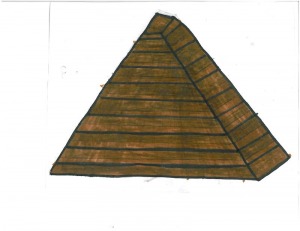The Ancient Mayan Civilization

- The Mayans played a ball game called Pok-A-Tok, which was played by the Mayans for over 3,000 years. The rules for Pok-a-Tok were simple, you can only hit the ball with your hip, elbow, knees or bum if you hit the ball with any other part of your body it was a foul.
- Pok-A-Tok was not just played by normal people, kings played it too at religious ceremonies but during a normal game the winners were aloud to kill there opponents and the captain of winning team could sacrifice himself to the goods because her was “pure” enough.
- Points were scored by passing the ball to your teammates ,but if you shot the ball thorough the ring which was about 20 above the ground you automatically won. You might think it would be easy to score a point but it was actually very hard because the was not bouncy, very hard rubber that weighted 6-8 pounds and you couldn’t hit it with your hands or feet. The ball courts that they played on were flat, thin, walled in stretches of land shaped like a capital I. On the walls of the court there were spaces for spectators to stand and watch the ball game.
Mayan Pyramids

Pyramids were very important to the Mayans, they held temples and the gods “lived” in temples. The king of the city state’s tomb was also in the pyramid.
Pyramids were the tallest buildings in the city state the Mayans called them “mountains.” The shrines at the top of the pyramid were just like Mayan houses except they were made of stone and beautify decorated.
The temples for the gods were at the top of the pyramid, the higher the shrine was the more important the god was to the people who lived in the city.
there are 2 types of pyramids. 1 type of pyramid was the kind that was meant to be admired by people the other kind was the kind that was used by the priests at religious ceremonies.
Kings were the only people buried under pyramids an average person was buried under their home.
The temples were not only homes to the gods they were also homes to priests.
Pyramids were the tallest buildings in the city state the Mayans called them “mountains.” The shrines at the top of the pyramid were just like Mayan houses except they were made of stone and beautify decorated.
The temples for the gods were at the top of the pyramid, the higher the shrine was the more important the god was to the people who lived in the city.
there are 2 types of pyramids. 1 type of pyramid was the kind that was meant to be admired by people the other kind was the kind that was used by the priests at religious ceremonies.
Kings were the only people buried under pyramids an average person was buried under their home.
The temples were not only homes to the gods they were also homes to priests.
